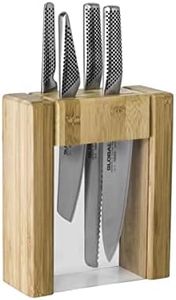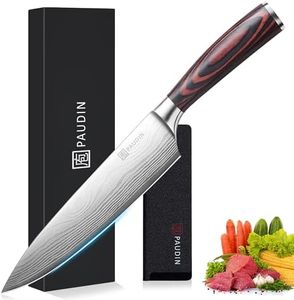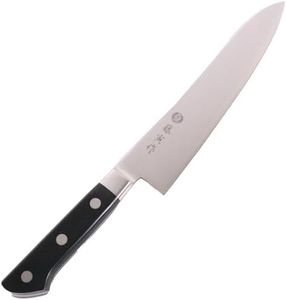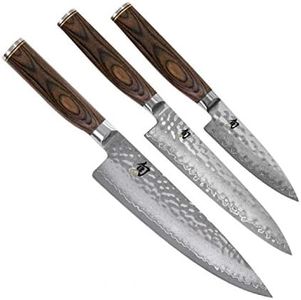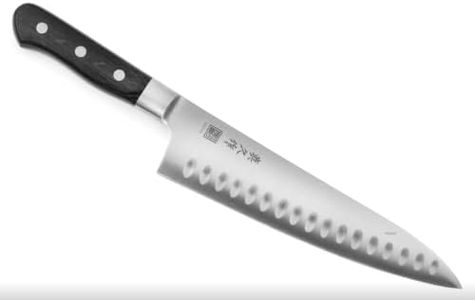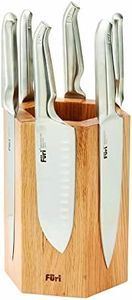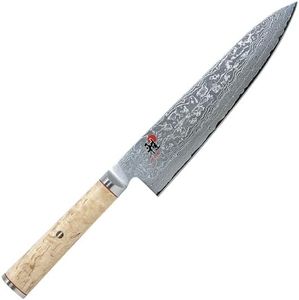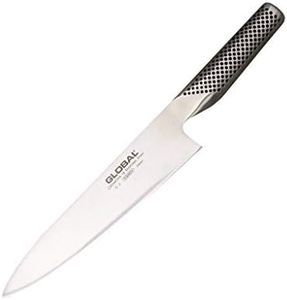We Use CookiesWe use cookies to enhance the security, performance,
functionality and for analytical and promotional activities. By continuing to browse this site you
are agreeing to our privacy policy
10 Best Chef Knives
From leading brands and best sellers available on the web.By clicking on a link to a third party's website, log data is shared with that third party.
Buying Guide for the Best Chef Knives
Choosing the right chef knife is essential for anyone who enjoys cooking, from beginners to experienced home chefs. The right knife can make food preparation faster, safer, and more enjoyable. When shopping for a chef knife, pay close attention to the blade's material, size, shape, weight, balance, and handle comfort, as these factors greatly influence performance and how the knife feels in your hand.Blade MaterialThe blade material is what the knife's cutting edge is made from, and it affects sharpness, durability, and maintenance. Common materials include stainless steel, carbon steel, and various alloys. Stainless steel is rust-resistant and easier to care for, making it great for most kitchens, while carbon steel can be sharper and easier to hone but may need more care to prevent rust. For most home cooks, a good quality stainless steel blade is the best pick, but if you are willing to maintain your tools carefully, carbon steel can offer a super-sharp edge.
Blade LengthThe blade length, typically ranging from 6 to 10 inches, determines how much food you can handle at once and how easily you can control the knife. Shorter blades (around 6 inches) offer more control and are ideal for smaller hands or precise tasks, while longer blades (8 to 10 inches) can handle larger items and more volume but may feel unwieldy for beginners. Most people find that an 8-inch blade is a comfortable middle ground for a variety of kitchen tasks.
Knife WeightWeight influences how the knife feels during use. Heavier knives can help with cutting through tough foods by adding force, while lighter knives allow for quick, controlled chopping and less fatigue during long prep sessions. If you do lots of tough chopping, a heavier knife might help, but if you mostly do light slicing and prefer agility, a lighter knife will be more comfortable.
BalanceBalance describes how the weight is distributed between the blade and handle. A well-balanced knife ensures it feels comfortable and steady in your hand, reducing strain. To judge balance, hold the knife at the point where the blade meets the handle; a balanced knife will not tip significantly forward or back. If you're unsure, try different knives in person to see which feels most comfortable and stable for your grip.
Handle Comfort and MaterialHandle comfort is crucial for safe and enjoyable use. Handles come in materials like wood, plastic, and composites. Wooden handles can offer a natural feel but may need more care, while composites and plastics are durable and less affected by moisture. The shape of the handle should fit snugly in your hand without slipping. Always choose a handle that feels secure, comfortable, and well-suited to the size of your hand.
Edge TypeEdge type refers to the shape and sharpness of the cutting edge, with most chef knives featuring a smooth (straight) edge suitable for general purpose cutting. Some knives have a slightly curved edge that aids rocking cuts, while others are more straight for push cutting. Your style of chopping and cutting should guide your choice; if you like to rock the knife back and forth, look for a gently curved blade, but for straight up-and-down slicing, a less curved edge may be preferable.
